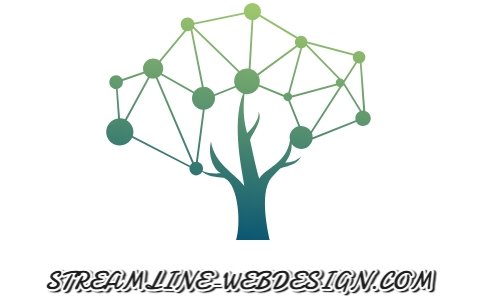
When we discuss stellar UX design, the conversation usually revolves around clean interfaces, seamless checkout flows, or tools that make life easier—think Amazon, Airbnb, or your city’s bus tracking app. But there’s a whole sector flying under the radar of traditional UX analysis: adult platforms. And if we’re brave enough to look closer, we’ll find one of the most provocative case studies in modern design—OnlyFans.
OnlyFans is more than just a platform for adult content; it’s a masterclass in user engagement. Its design doesn’t just encourage interaction—it compels it. It makes users feel seen, connected, even loved. But peel back the interface, and what emerges is a UX model built not just on delight and ease of use, but on emotional manipulation, blurred boundaries, and a gamified structure that treads dangerously close to addiction.
This isn’t just about adult entertainment. This is about how far we, as designers, are willing to go in the pursuit of engagement.
The Intimacy Illusion: When UX Feels Like Love
What sets OnlyFans apart isn’t the content itself—it’s the experience. The platform creates a sense of intimacy so potent that users often feel like they’re part of something exclusive, even personal. Unlike traditional social media or streaming services, OnlyFans thrives on the perception of direct, meaningful relationships between creators and subscribers.
That’s not accidental. It’s design.
Everything from the frictionless payment process to the seamless messaging features is built to make interactions feel real. Subscription tiers, pay-per-view content, and one-on-one messaging simulate the structure of actual relationships. The interface doesn’t say “consume this”; it whispers, “connect with them.”
From a UX standpoint, it’s brilliant. From an ethical perspective? Not so clear.
These parasocial dynamics—where a person believes they have a reciprocal relationship with someone who doesn’t know them—aren’t new. But OnlyFans turns this into its core business model. And it does it with subtlety and precision. When Netflix charges extra for premium content, users know they’re paying for a product. When a fan tips a creator for a “personal” message, the line between product and person becomes murky.
Should we applaud the ingenuity or question the morality?
The Gamified Feedback Loop: Addiction by Design
It’s not just intimacy that keeps users coming back—it’s reward. Personalized replies, custom videos, shoutouts. Each interaction hits the user with a dose of dopamine, reinforcing their behavior and making the platform feel indispensable.
It’s not unlike the psychological hooks used in mobile games. Think Candy Crush or Genshin Impact: limited-time events, exclusive rewards, endless nudges to stay engaged. OnlyFans, however, ups the ante by attaching these mechanisms to human interaction. The “win” isn’t just a badge or in-game item—it’s attention, affection, and acknowledgment from a real person.
That feedback loop is more than engagement—it borders on dependency.
Let’s call it what it is: a gamified system designed to extract emotional and financial investment. The UX here doesn’t simply encourage continued use—it cultivates it, like a habit. Or worse, like a compulsion.
And if we’re being honest, that’s not a bug. It’s a feature.
Creators at the Center—or on the Treadmill?
On the flip side, OnlyFans has been praised for empowering creators. The platform provides tools for monetization, control over pricing, and direct communication with fans. On paper, that’s a dream.
In practice, it’s complicated.
The expectation to constantly produce content, respond to messages, and maintain emotional engagement with fans turns the creator experience into a high-stakes hustle. The pressure is relentless. Miss a day, lose a subscriber. Skip a message, and risk alienating a high-paying fan. Unlike platforms like Etsy, where sellers compete on goods and marketing, OnlyFans creators compete on presence, performance, and emotional labor.
It’s not empowerment—it’s endurance.
Designers might look at this and think: “We’re giving users tools, autonomy, freedom.” But are we also designing systems that quietly push people to burnout? Are we mistaking flexibility for freedom, and engagement for exploitation?
A Mirror to the UX Industry
OnlyFans is controversial—but not just because of the content it hosts. Its design challenges the boundaries of what UX is supposed to do. We often celebrate “frictionless” experiences, emotionally engaging interfaces, and retention-driving mechanics. But here, we see those same tools used in ways that make us uncomfortable.
And maybe that’s the point.
Facebook’s algorithms, TikTok’s endless scroll, YouTube’s autoplay—they’re all designed for maximum engagement, often at the expense of user wellbeing. OnlyFans just takes these same techniques and applies them to a different kind of content, in a more intimate wrapper.
If we find that disturbing, perhaps we should ask ourselves why.
Is it the platform itself that’s unsettling—or the fact that it’s exposing truths about our own practices as designers? About how far we’re willing to go to capture attention, create “stickiness,” and generate revenue?
The Questions We Need to Ask
OnlyFans doesn’t just pose a challenge to moral comfort zones; it poses a challenge to the UX industry as a whole. It forces us to confront hard questions:
- Are we designing to enhance lives, or to extract value from emotion?
- Are we enabling creators, or quietly chaining them to performance metrics?
- Can we use these tools ethically, or are some design strategies inherently harmful?
There are no easy answers. But one thing is certain: pretending these questions don’t exist is no longer an option.
Final Thoughts
OnlyFans isn’t just a case study in adult entertainment—it’s a warning shot across the bow of UX design. It shows us what happens when every feature is optimized not just for usability, but for emotional capture and financial retention.
As designers, we wield enormous influence over how people experience the digital world. With that power comes responsibility—not just to make things work, but to make them right.
And if we’re serious about building a better internet, we can’t afford to look away from the dark side of our own craft.
We have to ask the hard questions. And more importantly, we have to be willing to listen to the answers.











